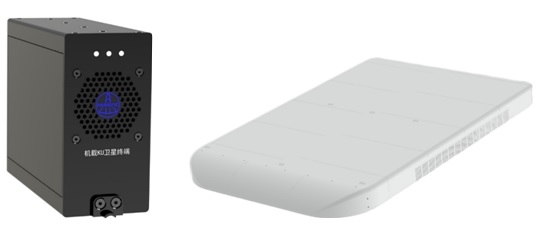Aero broadband Ku satellite equipment is an aerial mobile satellite communication technology based on the Ku band. It utilizes Ku satellite communication resources from high orbits (Asia-9 and Asia Pacific-6D up to 2Mbps bidirection) and low orbits (QianFan Constellation up to 30Mbps bidirection). Combined with RF transmission equipment, baseband modem equipment, and network equipment, it achieves high-speed data transmission (such as internet access, data transmission, voice communication, real-time video, etc.) between aircraft and ground stations during flight. It can be widely applied in weather modification, emergency response, civil aviation, business aviation, military, and unmanned aircraft fields.
The aero broadband Ku satellite communication system includes satellite terminal equipment and a phased array antenna.
The aero Ku antenna adopts phased array antenna technology, which has the ability to overcome the high-speed movement and attitude changes of the aircraft to achieve continuous automatic tracking of satellites and has good heat dissipation performance.
The aero Ku phased array antenna adopts a highly integrated, flexibly configurable, and scalable layered modular system architecture. It is mainly composed of a Ku-band receiving antenna array, a Ku-band transmitting antenna array, filters, an integrated control unit, a radome, an antenna frame, thermal control equipment, a frequency conversion module, power supply equipment, and a lightning protection circuit.
The aero Ku satellite channel terminal converts user data (such as IP packets) into Ku-band RF signals via a modulator. The high-power amplifier boosts the signal strength, and the signal is transmitted to the satellite through the aero Ku phased array antenna. After the satellite receives the signal, it is down-converted by the transponder to the Ku-band downlink frequency and amplified. The re-transmitted signal is captured by the aero Ku phased array antenna, received by the low-noise amplifier, demodulated back to data, and distributed to network users through the aero Ku satellite channel terminal.
The aero Ku satellite channel terminal uses a dual-mode aero modem, compatible with both regional beams and spot beams. The terminal is powered by 28V DC , and the business and management interface is a 100M/1000M adaptive network port, compliant with the IEEE802.3 standard. It supports the OpenAMIP antenna control protocol and accepts Arinc429 airborne platform inertial navigation information input.

